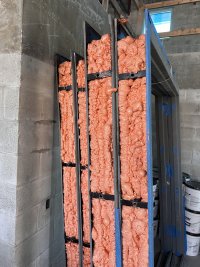-
Welcome to The Building Code Forum
Your premier resource for building code knowledge.
This forum remains free to the public thanks to the generous support of our Sawhorse Members and Corporate Sponsors. Their contributions help keep this community thriving and accessible.
Want enhanced access to expert discussions and exclusive features? Learn more about the benefits here.
Ready to upgrade? Log in and upgrade now.
You are using an out of date browser. It may not display this or other websites correctly.
You should upgrade or use an alternative browser.
You should upgrade or use an alternative browser.
Why Is This Being Done?
- Thread starter jar546
- Start date
TheCommish
SAWHORSE
Thought it was a good energy savings idea
bill1952
SAWHORSE
fire rating
Inspector Gadget
REGISTERED
Forget the "why" of what's being done,
WHAT is being done?
WHAT is being done?
Insulation is added, whether exterior or interior, to reduce the hollow rattling noise when a door within the frame is closed. They used to fill the frames with grout, but the moisture in the grout would rust the frames. The Steel Door Institute no longer recommends grouting. Sometimes fiberglass insulation is used, but the foam insulation works better.
north star
MODERATOR
- Joined
- Oct 19, 2009
- Messages
- 4,596
# ~ #
Might be some room privacy installation [ i.e. - sealing the openings
in a room \ space ].
# ~ #
Might be some room privacy installation [ i.e. - sealing the openings
in a room \ space ].
# ~ #
We still grout door frames, particularly in industrial facilities. This is why galvanized welded door frames are a thing.
When they rust out, its time to replace them. I've seen them last ~50 years which seems reasonable.
In any case, grouting or foaming, you do it AFTER the door is installed.
When they rust out, its time to replace them. I've seen them last ~50 years which seems reasonable.
In any case, grouting or foaming, you do it AFTER the door is installed.
steveray
SAWHORSE
Thats what I was thinking...thermal bridging....Thought it was a good energy savings idea
TheCommish
SAWHORSE
They though it was a good energy savings idea. I don't, the metal will conduct the temperature delta right through it.Thats what I was thinking...thermal bridging....
It may have some value to air sealing if they foam the flange after it it installed in block or solid wall
steveray
SAWHORSE
Gotta be a little better no? If it ends up air sealed that is... Plus the sound?They though it was a good energy savings idea. I don't, the metal will conduct the temperature delta right through it.
It may have some value to air sealing if they foam the flange after it it installed in block or solid wall
TheCommish
SAWHORSE
probably a bit better
You'll still have thermal bridging through the frame unless you use a frame with a thermal break, which is available from several hollow metal manufacturers.Thats what I was thinking...thermal bridging....

